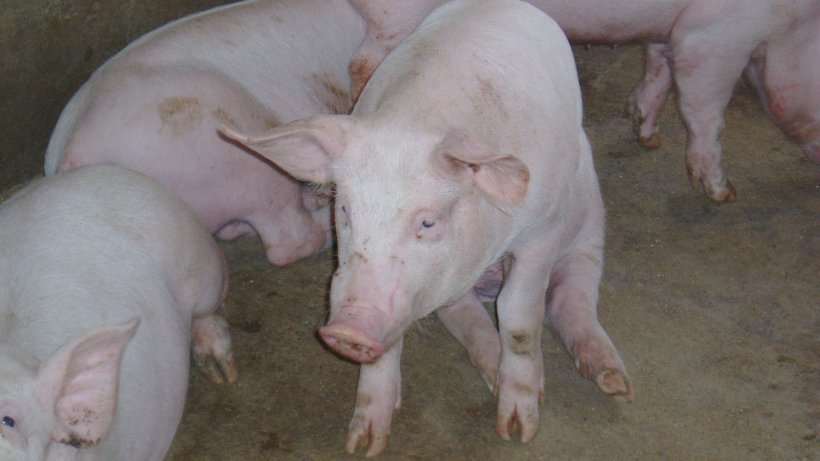Assays available:
Immunohistochemistry (IHC)

- Detects presence of viral antigen
- Sample types: tissues
- Pros:
- Detects virus at site of lesion (good proof of causation).
- Any positive result is considered significant.
- Cons:
- Correct tissue sample must be submitted.
- Requires significantly more virus to be present than PCR.
- Only evaluating a small tissues sample.
- Latent infections likely will be missed unless trigeminal nerve and/or tonsils are included.
Polymerase chain reaction (PCR)
- Detects presence of specific sequence of viral nucleic acid (DNA)
- Sample types: tissues
- Pros:
- High sensitivity.
- PCR quantification is associated with presence of lesions.
- Moderate cost
- Can often do pooling of tissue samples to lower cost while minimizing loss of sensitivity (especially regarding clinical relevance).
- Some PCR assays can differentiate wild-type from gene-deleted vaccine viruses.
- Cons:
- Requires tissue samples (post-mortem) for best results.
- Latent infections likely will be missed unless trigeminal nerve and/or tonsils are included.
Enzyme-linked immunosorbent assay (ELISA)
- Detects presence of antibodies
- Sample types: serum
- Pros:
- Animals remain positive for several weeks.
- Can be used in chronic cases.
- Can be used to differentiate exposure to wild-type from gene-deleted vaccine (see Table 1).
- Any positive result to wild-type virus is considered significant.
- Only takes 5-7 days to become seropositive after wild-type exposure.
Table 1 helps demonstrate the DIVA (Differentiate Vaccinated from Infected) capabilities of some ELISA assays when using a gene deleted vaccine.
| VN Result | Differential ELISA targeting deleted gene gE/g1 or gB result | Interpretation |
|---|---|---|
| Positive | Positive |
Exposed to wild-type virus |
| Positive | Negative | Vaccinated animal not exposed to wild-type virus |
| Negative | Positive | Assay error, result not possible |
| Negative | Negative | Not vaccinated and not exposed to wild-type virus |
- Cons:
- Need to match the proper assay with the proper gene-deletion in the vaccine.
- Takes 10-14 days to become seropositive after vaccination.
Virus neutralization (VN)
- Detects presence of antibodies
- Sample types: serum
- Pros:
- Animals remain positive for several weeks
- Can be used in chronic cases
- Higher sensitivity than ELISA (can detect lower concentration of antibodies)
- Cons:
- Not feasible for large number of samples.
- Takes 12 days for animals to become seropositive.
- Unable to differentiate vaccine vs. wild-type infection.
- Reliability is highly dependent on technician skills.
- Reactivity is dependent on virus isolate used
Result interpretation:
IHC
- Positive: Virus is present at site of lesion
- Negative: Negative or infection is too late to detect virus
PCR
- Positive: Virus is present. Recent vaccination with a modified live virus can result in positive PCR results
- Negative: Negative or virus could have been missed if testing occurs late after infection
ELISA (target gene deleted)
- Positive: Maternal antibodies or past exposure (>5-7 days) to wild-type virus.
- Negative: Negative or wild-type infection too early to detect.
VN
- Positive: Past exposure (> 5-14 days) to wild-type virus or vaccine.
- Negative:
- Negative to vaccine or wild-type virus
- Infection too early to detect (<5-7 days for wild-type virus or <10-14 days for vaccination)
Scenarios
Sow herd with abortions
- Collect 6-8 fetuses and pool samples for PCR testing.
- Sows/gilts that aborted: Collect serum from sows/gilts that recently aborted for PCR testing. Can pool in groups of 5.
- ELISA testing of individual samples can be done if >7 days after abortion.
- VN testing instead of ELISA is preferred in herds not vaccinated for Aujeszky’s disease due to higher diagnostic sensitivity of assay.
Replacement gilt selection from vaccinated herds with known positive animals

- Collect blood samples from 100% of replacement gilts and test individual samples via ELISA and VN.
- Only keep animals positive on VN and negative on ELISA (see Table 1 above).
Replacement gilt selection from vaccinated herds with no known positive animals
- Collect blood samples from at least 30 randomly selected replacement gilts and test individual samples via ELISA and VN.
- If all samples tested are positive on VN and negative on ELISA (see Table 1 above) you can keep entire group of replacement animals.
- If any sample is negative for VN, you must test 100% of the remaining gilts and only keep gilts which have been vaccinated (VN= positive).
- If any gilts test positive via ELISA, re-evaluate the merit of keeping any animal from the group as this would suggest the source herd is now positive for Aujeszky’s disease.




